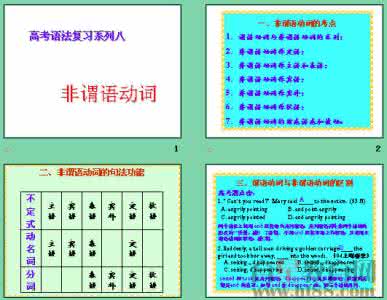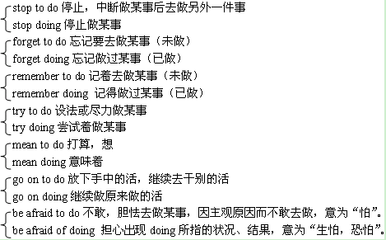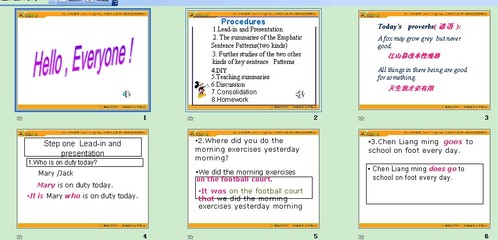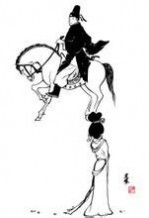在中学教科书中,动词不定式是一个非常重要的语法点;在历年高考中,动词不定式是频频考查的要点之一;在学生的学习实践中,动词不定式是琐碎、难学的语法项目之一。为了更熟练、准确、有针对性地掌握此项语法知识,下面把(N)MET对动词不定式作主语、宾语、定语及状语的考查点进行总结、归纳。 I. 不定式作主语
1. 不定式作主语时,常用it作形式主语,而将作主语的不定式放在句子后部。例如:
It is good to help others.帮助他人是件好事。
It is exciting to surf the Internet.上网是件令人兴奋的事。
2. 不定式作主语与V-ing形式作主语的不同:前者作主语时,常表示某一次具体的动作;而后者常表示习惯性的动作。例如:
To teach the three children is my job this afternoon. 教这三个孩子是今天下午我的工作。 Walking is a good form of exercise. 散步是锻炼的一种好方式。
简析: It's ... of sb. to do sth.与It's... for sb. to do sth.
当表语形容词说明不定式的逻辑主语具有某种品质时,常用
It's very kind / nice of you to help me。感谢你的帮助。
当表语形容词说明不定式具有某种特征时,应使用
It's hard for the Chinese students to learn Russian. 中国学生学俄语是很难的。
[高考题例]
1. Is ________ necessary to complete the design before National Day?
A. this B. that C. it D. he
2. It was foolish ________ you to give up what you rightly owned.
A. for B. of C. about D. from
II. 不定式作宾语
1. 学习不定式作宾语时,要注意掌握四种动词:
1) 后接不定式作宾语的动词。常见动词有: offer, decide, hope, promise, agree, plan, manage, refuse, wish, pretend, learn, want等。
2) 后接V-ing形式作宾语的动词。常见动词有: enjoy, mind, suggest, advise, finish, practise, imagine, admit, avoid, delay等。
3)后接不定式和V-ing形式作宾语均可,且没有大的区别的动词。常见动词有: start, begin, continue等。
4)后接不定式和V-ing形式作宾语均可,但意思不同的动词。常见动词及短语有:try, remember, forget, regret, stop, go on等。例如:
Please remember to lock the door when you go out. 出去时请记住要锁门。
I don't remember lending you any money. 我不记得借过钱给你。
I regret saying what I said. I shouldn't have said it. 我后悔我所说过的话,我本不该说那些话。 I regret to tell you that you failed your driving test. 我很遗憾地告诉你,你没有通过驾驶测试。 The minister went on talking for two hours. 部长的讲话持续了两个小时。
After discussing the economy, the minister then went on to talk about foreign policy. 讨论完经济,部长接着谈论外交政策。
2. 动词不定式在句中作宾语,如带有宾语补足语时,要先用it作形式宾语,而将该不定式后置。例如: I don't think it right to do it in that way.我觉得以那种方式去做是不恰当的。
I find it hard to get along with him. 我发现与他相处不是件容易的事。
3.
I don't know where to spend my holiday. 我不知该去哪儿度假。
Have you decided when to marry?你决定什么时候结婚了吗?
[高考题例]
3. She pretended ________ me when I passed by.
A. not to see B. not seeing C. to not see D. having not seen
4. Little Jim should love ________ to the theatre this evening.
A. to be taken B. to take C. being taken D. taking
5. -I usually go there by train.
-Why not ________ by boat for a change?
A. to try going B. trying to go C. to try and go D. try going
6. -Was the test difficult?
-Not at all. We found ________ .
A. it very easy for doing
B. very easy to do it
C. it very easy to do
D. it very easy to do it
7. -Do you know Mr. Smith?
-Yes. He's a strange man. We found ________ difficult to work with him.
A. us B. it C. him D. you
8. I don't think ________ possible to master a foreign language without much memory work.
A. this B. that C. its D. it
9. Last summer I took a course on ________ .
A. how to make dresses
B. how dresses be made
C. how to be made dresses
D. how dresses to be made
10. It is said in Australia there is more land than the government knows ________ .
A. it what to do with

B. what to do it with
C. what to do with it
D. to do what with it
III. 不定式作定语
不定式作定语时,应注意使用不定式的正确形式。请看下列句子:
I have a lot of work to do today. 我今天有很多工作要(自己)做。
I have a lot of work to be done today. 我今天有很多工作要(别人)做。
Do you have anything to take to your son? 你有什么东西要(自己)带给你儿子吗?
Do you have anything to be taken to your son? 你有什么东西(让别人)带给你儿子吗?
简析:当句子的主语是不定式的逻辑主语时,不定式使用主动式;当句子的主语不是不定式的逻辑主语而不定式与所修饰的名词或代词之间是被动关系时,不定式使用被动式。
IV. 不定式作状语
1. 不定式常常作目的状语、原因状语、结果状语等。不定式作状语时,要注意不定式的逻辑主语应与句子的主语保持一致。
[高考题例]
11. To be a great scientist, ________ .
A. maths is very important
B. maths is more important than other subjects
C. one must understand maths
D. maths is important to be understood
2.
The naughty boy is hard to deal with.那个顽皮的男孩很难对付。
[高考题例]
12. Tom kept quiet about the accident ________ lose his job.
A. so not as to B. so as not to C. so as to not D. not so as to
Key:
1-5 CBAAD 6-10 CBDAC 11-12 CB
百度搜索“爱华网”,专业资料,生活学习,尽在爱华网
 爱华网
爱华网



